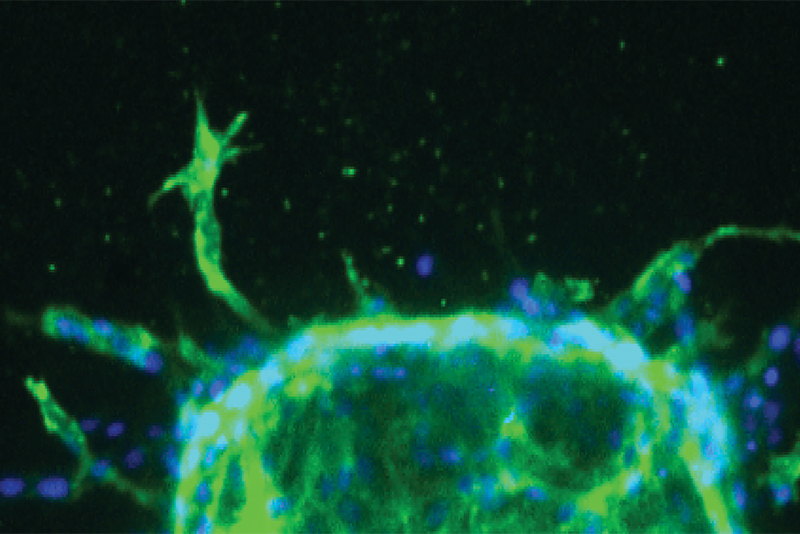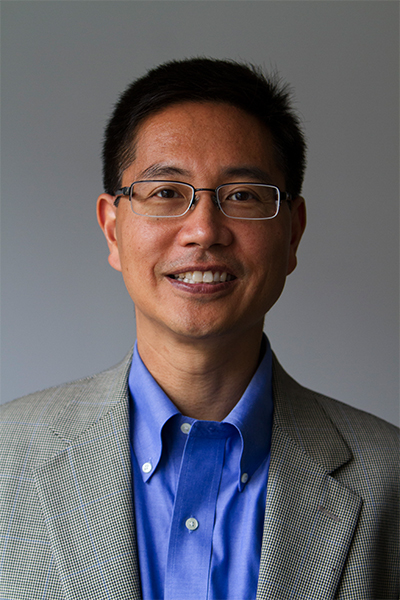New Study Probes Mechanics of Blood Vessel Formation
Findings could open up new avenue for disease treatment

Cells sprouting from the end of an artificial blood vessel engineered by Professor Christopher Chen and his team. Photo courtesy of the University of Pennsylvania’s Center for Engineering Cells and Regeneration
Angiogenesis, the sprouting of new blood vessels from preexisting ones, is essential to fuel human growth and development but also plays a critical role in the onset and progression of some major diseases. While the process accelerates in cancerous tumors as they grow, it can’t go fast enough in the most common form of heart disease and in engineered tissue implants, where the growth of new vessels is critical to providing organs and tissues with a sufficient oxygen supply. Drugs that either inhibit or accelerate the creation of new blood vessels could play a significant role in treating certain diseases, but their effectiveness will depend on a more complete understanding of how those vessels form.

Building on research pinpointing various biochemical factors involved in angiogenesis, Boston University College of Engineering Professor Christopher Chen (biomedical engineering), one of the world’s leading tissue engineering researchers and an associate faculty member at the Wyss Institute for Biologically Inspired Engineering at Harvard University, has sought to shed light on the mechanics underlying the process. Since 2011, he and postdoctoral fellow Peter Galie have led a team of researchers at Boston University and the University of Pennsylvania to investigate why fluid filtering through blood vessel walls triggers the sprouting of new blood vessels.
Conducting experiments with artificial “blood vessel-on-a-chip” devices that they engineered using a design inspired by microfluidic technology developed by Associate Professor Joe Tien (biomedical engineering, materials science and engineering), the researchers discovered that cells lining each artificial vessel sprouted to form new vessels once the force exerted by fluid leaking through the original vessel wall exceeded a certain threshold. They also determined they could induce sprouting of a new vessel by boosting the force exerted by fluid flowing inside the original vessel to match this same threshold, challenging a widely held notion that flow within blood vessels always prevents sprouting.
“These findings suggest that our blood vessels can sense when blood flow exceeds their carrying capacity and respond by producing additional vessels on demand,” Chen explained. “Perhaps we could one day take advantage of this response to enhance vessel regrowth where the need is critical, such as after a heart attack.”
Chen and his collaborators reported their findings in Proceedings of the National Academy of Sciences (PNAS). Their work was funded by the National Institutes of Health and the University of Pennsylvania’s Center for Engineering Cells and Regeneration, where Chen was a founding director.
“The logical next step is to determine the molecular mechanism behind this phenomenon,” said Galie. “What proteins are involved and how might they be targeted in new drug therapies?”